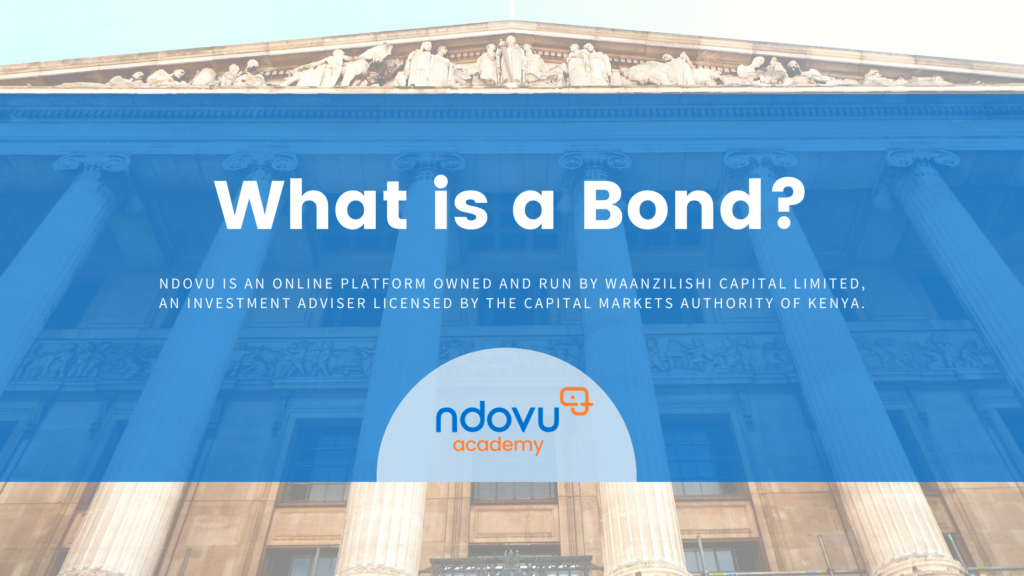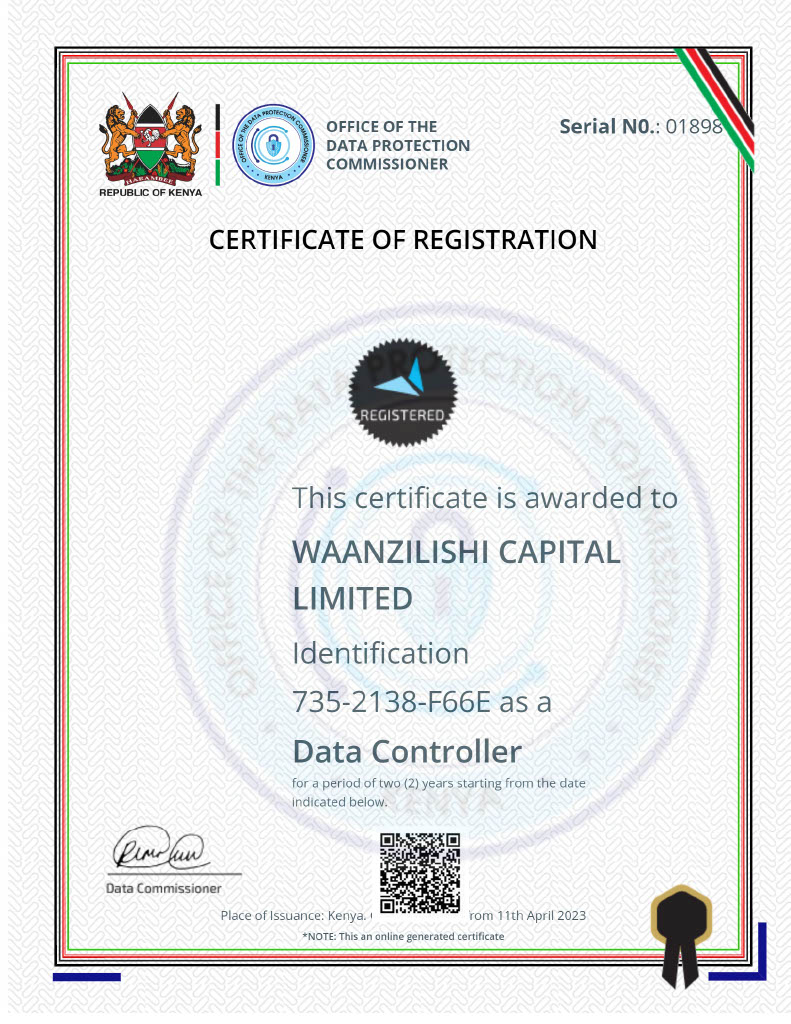A bond is an IOU. When you buy a bond, you are loaning money to a borrower (in finance terminology, the borrower is called an ‘issuer’) for a defined period.
At the end of the period, this loan is repaid.
In exchange for this loan, you receive a predetermined interest rate (the ‘coupon’), paid quarterly, semi-annually, or annually.
Infrastructure Government Bond example:
In this example, the Government of Kenya is the “issuer,” you will be loaning it money for 21 years.
Interestingly, if you need your money back, you don’t have to wait for 21 years to be repaid. You can sell the bond through Ndovu.
The Government of Kenya offers an interest rate of c.12.5%, which will be paid semi-annually annually.
Here’s how it works:
You loan the Government of Kenya Ksh 100,000 today for five years. This is what you earn every year until you decide to sell the bond:
| Loan Amount (Ksh) | 100,000 | ||||
| Annual Interest Rate | 12.50% | ||||
| Time | Year 1 | Year 2 | Year 3 | Year 4 | Year 5* |
| Total Earnings | 12,500 | 12,500 | 12,500 | 12,500 | 112,500 |
*For easy calculation, We have assumed that market rates remain at 12.5% in year 5. Investors need to be aware that market interest rates are dynamic.
Now that you understand what a bond is let’s get investing!
Sign up here.
Disclaimer.
The information provided on this platform and the products and services offered are intended solely for persons in regions and jurisdictions where such distribution and utilization are in accordance with local laws and regulations.
ndovu does not promote its services in regions lacking the necessary licenses; It is exclusively available to persons residing in countries with a valid license or licensed partners. ndovu does not extend its services to citizens of the United States, Canada, Japan, and other restricted territories.

